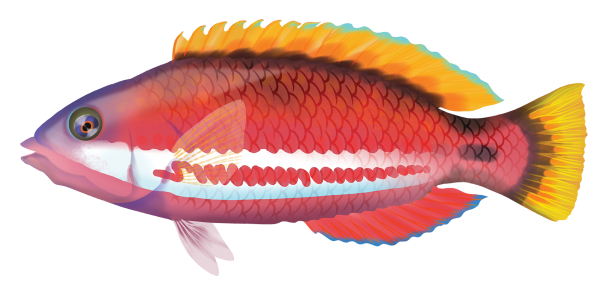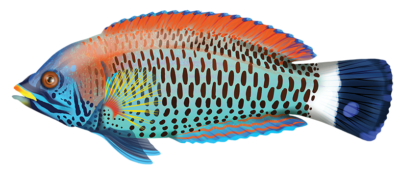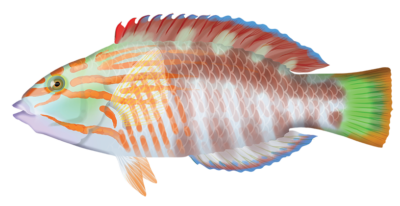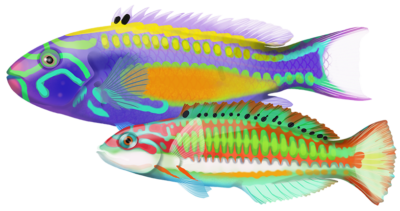Quick Facts
Distribution
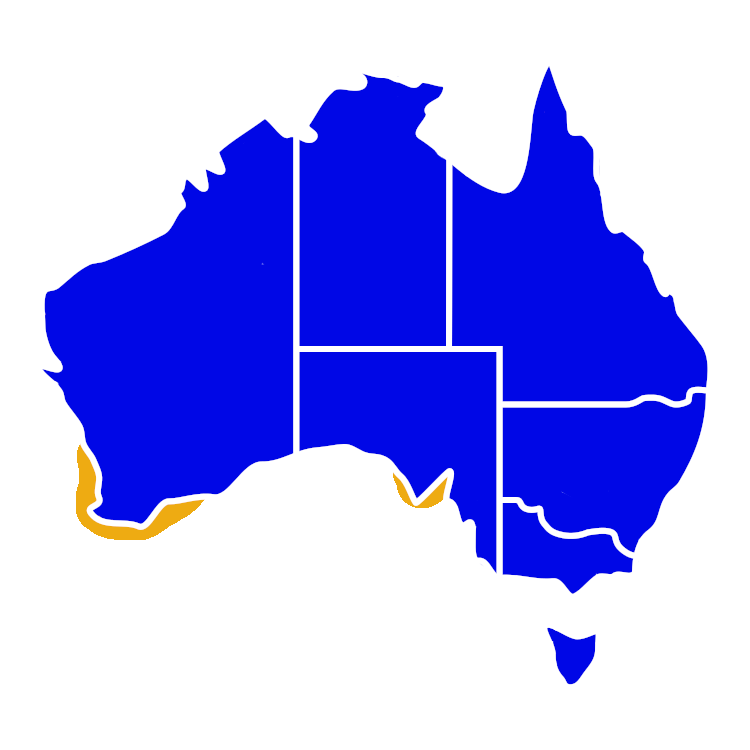
Interesting Info
- The Redband Wrasse is a small fish species that can be found along the southern and western coasts of Australia, primarily in Western Australia and South Australia.
- They have a slender body with a pointed snout and a single dorsal fin. The coloration of this species is highly variable and can range from reddish-brown to greenish-blue. The body has two distinct bands of colour, with a reddish-brown band running along the upper part of the body and a bluish-green band along the lower part.
- Juvenile Redband Wrasse have a different coloration compared to adults. They have a bright yellow-orange coloration with a dark spot on the base of the dorsal fin.
- This species is most active during the day and feeds on small crustaceans, molluscs, and other invertebrates.
- Redband Wrasse are protogynous hermaphrodites, meaning they start out as females and can change into males later in life.
- The spawning season for this species occurs from spring to summer, with females releasing their eggs into the water column and males fertilising them.
- This species has been observed to engage in cleaning behaviour, where they remove parasites and dead skin from other fish species.
- The estimated lifespan is between 7 – 8 years or more in the wild.
Species Interaction
Aquarium, Snorkeling & Diving
Redband Wrasse can make a colourful and active addition to a home aquarium. They are active and swim constantly, so they require plenty of swimming space and hiding places such as live rock or coral. They also appreciate sandy areas where they can burrow and sleep at night. Redband Wrasse can make for an interesting and photogenic subject for underwater photographers and videographers. They are generally not aggressive towards humans and can be observed from a safe distance without posing a threat.
Scientific Classification
Kingdom: Animalia
Phylum: Chordata
Class: Actinopterygii
Order: Perciformes
Family: Labridae
Genus: Pseudolabrus
Species: Pseudolabrus Biserialis
Conservation Status
The conservation status of Redband Wrasse in Australia is currently listed as “Least Concern” according to the International Union for Conservation of Nature (IUCN) Red List.
Redband Wrasse
As Aquarium Fish
Care Level: Moderate
Temperament: Aggressive
Diet: Carnivore
Reef Compatible: Yes
Minimum Tank Size: 40 gallons
Recreational Viewing
- Snorkeling & Scuba
Finding: Easy
Temperament: Aggressive
Location: Inner Reef, Outer Reef, Caves, Lagoon
Danger: None


